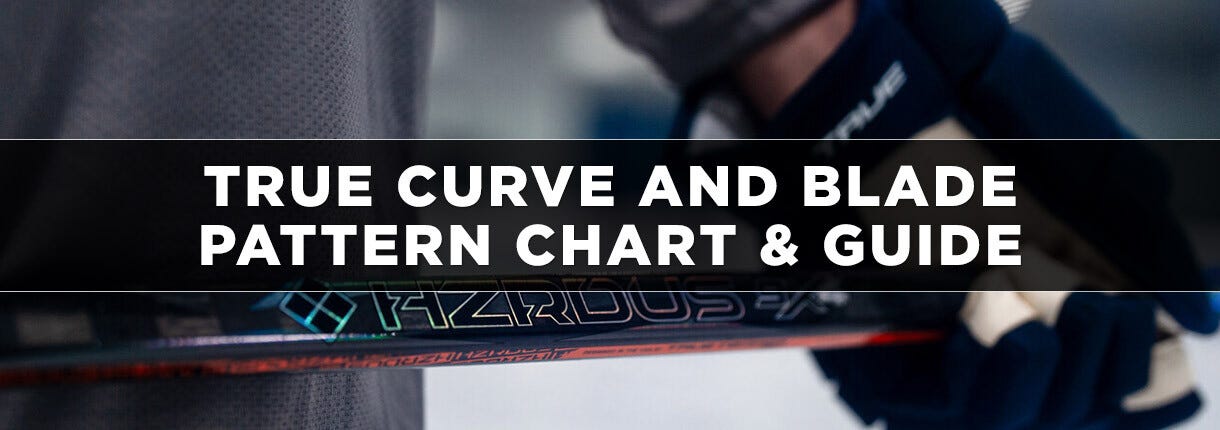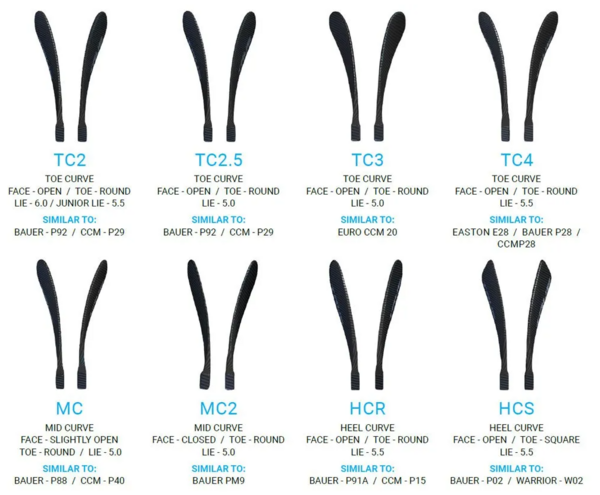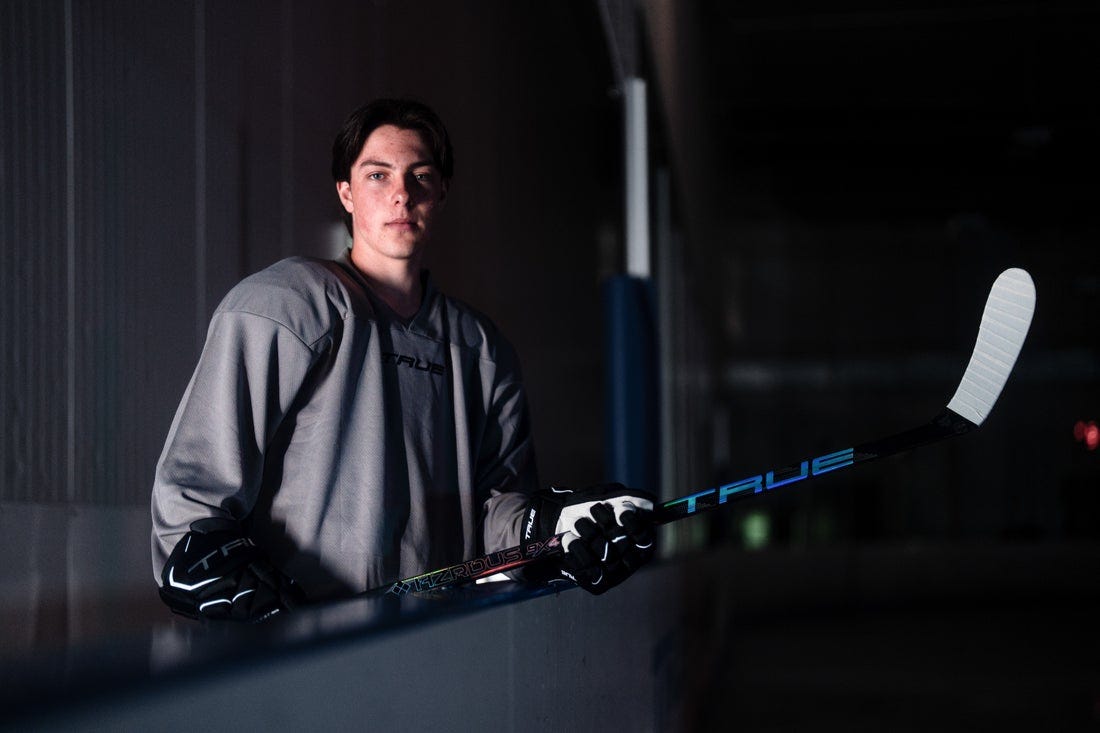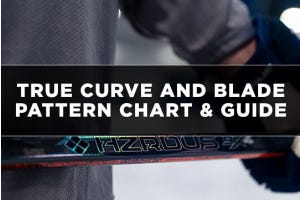True Curve Chart & Blade Patterns: The Ultimate Guide

Choosing the right hockey stick blade pattern and curve can significantly impact your game, enhancing your control, accuracy, and overall performance on the ice. This guide delves into the intricacies of True Hockey's blade patterns and curves, helping you make an informed decision tailored to your playing style. True offers a variety of blade patterns and curves designed to suit different preferences and positions, ensuring that every player can find their perfect match.
In this article, we will cover:
Understanding Hockey Stick Curves
Before diving into True's offerings, let's establish some key terms:
Curve Type: Refers to the overall shape of the blade's lie, categorized as open (for lifting the puck), mid (versatile), or closed (for powerful shots).
Curve Depth: Indicates how deep the pocket of the blade is, impacting puck control and shot power.
Face Angle: The angle of the blade's flat face in relation to the shaft, affecting puck handling and shooting mechanics. Open face angles allow for easier puck elevation, while closed faces provide more control.
Lie: The angle at which the blade sits on the ice, influencing shooting power and puck receiving. A lower lie promotes harder shots, while a higher lie allows for easier stickhandling.
Toe Shape: The curvature of the blade's tip, impacting shot accuracy and puck manipulation in tight spaces.
The True Curve Chart Explained


True Hockey boasts a unique curve system, offering a range of options to cater to diverse playing styles. Here's a breakdown of their popular curves:
TC2 (Low Depth): Ideal for players who prioritize quick releases and puck manipulation. Offers a responsive feel and allows for deceptive wrist shots.
TC3 (Mid Depth): A versatile option, providing a balance between shooting power and puck control. Suits players who like to take slapshots and one-timers, while still maintaining good stickhandling.
TC4 (Mid Depth): Similar to TC3 but with a slightly more open face angle, making it easier to lift the puck and execute quick passes. Perfect for offensive players who value puck movement and creativity.
TC9 (High Depth): Designed for maximizing shot power. The deep pocket and closed face angle allow for powerful slapshots and one-timers. Great for players who focus on driving the net and generating scoring opportunities.
True Hockey Stick Blade Patterns
True offers distinct blade patterns that incorporate their curve technology. Let's explore each one:
T90 (TC3 Curve): A well-rounded pattern perfect for all-around players. Delivers excellent puck control, passing, and shooting capabilities.
T92 (TC4 Curve): A popular choice for offensive players. The open face angle and mid-depth curve enhance puck handling and quick releases.
Catalyst (TC3 Curve): Designed for a powerful and accurate shooting style. The rounded toe shape and mid-depth curve provide a good balance for both shooting and puck control.
Velocity (TC9 Curve): Built for pure power. The deep pocket and closed face angle maximize shot power for players who prioritize blistering slapshots and one-timers.
How to Choose the Right True Blade Curve
Choosing the right curve depends on several factors:
Playing Style
Offensive players – prioritize curves like TC2, TC4, or T92 for puck handling and quick shots.
Defensive players – might prefer TC3 or Catalyst for balanced performance.
Power forwards – benefit from TC9 or Velocity for maximizing shot power.
Position
Forwards often favor curves that promote puck control and quick releases, while defensemen might prioritize shot power and control for clearing pucks.
Personal Preference
Experiment with different curves to find what feels most comfortable and aligns with your playing style.


Comparing True Blade Patterns
| Blade Pattern | Recommended Skill Level | Style of Play | Unique Benefits |
| TC2 (Low Depth) | Intermediate to Advanced | Quick releases, puck manipulation | Responsive feel, deceptive wrist shots |
| TC3 (Mid Depth) | Intermediate to Advanced | All around play, s;apshots, one timers | Balanced shooting power, excellent stickhandling |
| TC4 (Mid Depth) | Intermediate to Advanced | offensive play, puck movement, quick passes | Easy puck lifting, enhances creativity |
| TC9 (High Depth) | Advanced | Power focused play, driving the net | Maximixes shot power, great for slapshots and one timers |
Common Stick Sizing Mistakes and How to Avoid Them
Choosing the right curve is just one aspect of proper stick selection. Here are common mistakes to avoid:
- Incorrect Lie: A lie that's too low can strain your wrists and back, while a high lie might hinder shooting power. Get professionally fitted or use a lie chart to determine the right fit for your height and playing style.
- Wrong Flex: A flex that's too stiff reduces shot power, while a flex that's too soft offers less control. Consider your strength, shooting style, and age when choosing flex.
- Ignoring Your Height: A stick that's too short limits your reach and leverage, while a stick that's too long can hinder maneuverability. Ideally, the top of the shaft should reach your chin or nose when the stick is standing upright.
FAQs on True Curve Chart & Blade Patterns
What does the depth of a curve influence in play?Curve depth impacts both puck control and shot power.
A deeper pocket provides more leverage for powerful shots but can make puck handling slightly trickier. Conversely, a shallower curve offers better puck feel but might limit the power you can generate on shots.
How do I know if I need an open or closed face angle?
Open face angles make it easier to lift the puck and execute quick passes, while closed faces provide more control for stickhandling and receiving passes. Offensive players often prefer open faces, while defensive players might benefit from closed faces.
Is the lie of a hockey stick important in choosing a blade pattern?
Yes, the lie works in conjunction with the curve to influence shooting style and puck control. A lower lie promotes a flatter shooting motion for harder shots, while a higher lie allows for easier stickhandling with the puck held further away from your body.
Can I use multiple blade patterns for different styles of play?
Absolutely! Some players own multiple sticks with different curves depending on the situation. For example, you might use a stick with a TC4 curve for offensive games and a TC9 curve for games where you need to focus on generating powerful shots.
How often should I review or change my blade pattern?
As your skill level progresses, you might find that your preferences for curve and blade pattern change. It's a good idea to experiment with different options and revisit your selection every year or so to ensure you're using the equipment that best suits your current playing style.






Login and Registration Form
or
Create an account